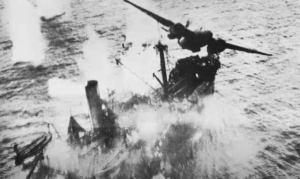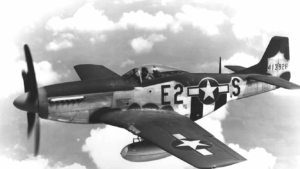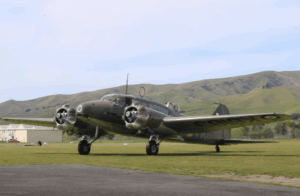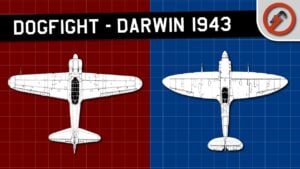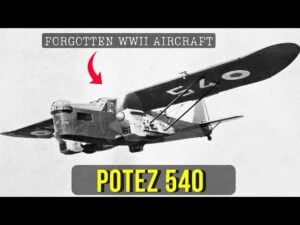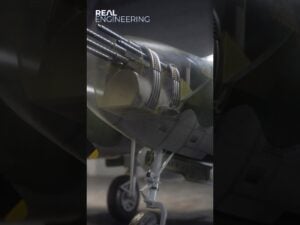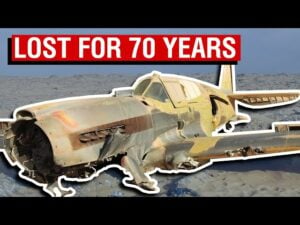6 American Aircraft of the Vietnam War and Cold War Eras

Gung Ho Vids / YouTube
Exploring the annals of military aviation reveals how advancements in technology and design played pivotal roles in shaping the outcomes of significant conflicts. The Vietnam War and Cold War eras were no exceptions. During these periods, a range of American aircraft demonstrated groundbreaking innovations and strategic capabilities. Here, we delve into the histories and contributions of six key aircraft that marked these eras, emphasizing their unique roles and lasting impacts.
Boeing B-52 Stratofortress
View this post on Instagram
The Boeing B-52 Stratofortress emerged as a symbol of American airpower with its ability to deliver significant ordinance over vast distances. Introduced in the early 1950s, this long-range, subsonic strategic bomber had the versatile capability to carry both conventional and nuclear weapons deep into enemy territory. The mastery in engineering behind the B-52 allowed for high-altitude, strategic bombing operations that would become critical in asserting U.S. military presence globally.
Apart from its formidable payload capacity, the B-52 boasts remarkable longevity and adaptability in service. Its continued use across several decades speaks to its robust design and ongoing upgrades, ensuring it remains a cornerstone in America’s aerial offensive capabilities. Far from a mere instrument of war, the Stratofortress also reflects the evolution of aerial warfare strategies and the importance of air superiority in modern conflict.
McDonnell Douglas F-4 Phantom II
View this post on Instagram
The McDonnell Douglas F-4 Phantom II stood out for its versatility and power as a two-seat, twin-engine, all-weather, long-range supersonic jet. Its dual roles as an interceptor and a fighter-bomber made it an invaluable asset across various combat scenarios. Initially deployed during the Cold War, the Phantom’s speed and firepower bridged the gap between air superiority and ground support missions.
In addition to its impressive performance metrics, the F-4 Phantom II has the distinction of serving with the U.S. Navy, Air Force, and Marine Corps, a testament to its adaptability and reliability. Its deployment in numerous conflicts beyond Vietnam further highlights the Phantom’s exceptional service record and its critical role in demonstrating American airpower on the global stage, all while ensuring the security of U.S. interests abroad.
Republic F-105 Thunderchief
View this post on Instagram
The Republic F-105 Thunderchief, made its debut just before the United States deepened its involvement in Vietnam in 1958. Known affectionately as the “Thud,” the F-105 represented a significant advancement in military aviation, boasting the capacity to deliver large payloads of weapons at high speeds. Its primary role as a strike bomber placed it directly in harm’s way, flying deep into enemy territory to engage formidable ground targets.
Despite facing fierce anti-aircraft defenses, the courage and skill of F-105 pilots became legendary. The aircraft itself underwent continual adaptations to enhance its survivability and effectiveness. Although it faced many challenges in the harsh environment of Southeast Asia, the Thunderchief’s contributions to air operations highlighted the evolving nature of air combat and the strategic importance of air superiority.
Douglas A-4 Skyhawk
View this post on Instagram
Compact yet highly effective, the Douglas A-4 Skyhawk carved its niche as a vital fighter aircraft within the U.S. Navy and Marine Corps during the early stages of the Vietnam War. This small, agile aircraft proved ideal for close air support missions and precision strikes against enemy positions. Its ability to operate from shorter aircraft carriers enhanced the U.S. Navy’s flexibility in responding to threats and projecting power in the conflict’s maritime regions.
In addition to its tactical advantages, the Skyhawk’s design emphasized efficiency without sacrificing firepower. As a result, it became a model for future aircraft development, influencing strategies around the utilization of naval air power. Its service during the Vietnam War underscores the crucial role of naval aviation in supporting ground and sea operations in complex conflict environments.
F-105 Thunderchief and A-7 Corsair II
View this post on Instagram
The service life of the F-105 Thunderchief faced eventual phasing out, making room for more advanced aircraft. Among its successors, the A-7 Corsair II stands out for inheriting the mantle of close air support and precision bombing. The transition to aircraft like the A-7 Corsair II and the continued use of the F-4 Phantom II represents a period of technological and tactical transition, reflecting broader shifts in military aviation strategies.
C-47 Skytrain
View this post on Instagram
Marking a significant chapter in airlift operations, the C-47 Skytrain was the pioneering aircraft sent to Vietnam, tasked with a diverse set of missions. Its roles ranged from dropping paratroopers to conducting resupply missions and night flare operations. The Skytrain’s versatility and reliability made it an unsung hero of the conflict, proving that air mobility and logistical support were as crucial as firepower in modern warfare.
The adaptability and resilience of the C-47 enhanced its legacy well beyond its years, showcasing the importance of airlift capabilities in sustaining military operations. Its contributions during the Vietnam War highlight the strategic value of air logistics in supporting both combat and humanitarian missions.














